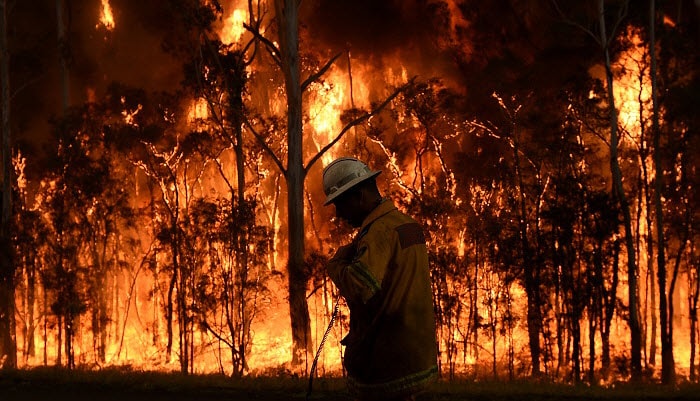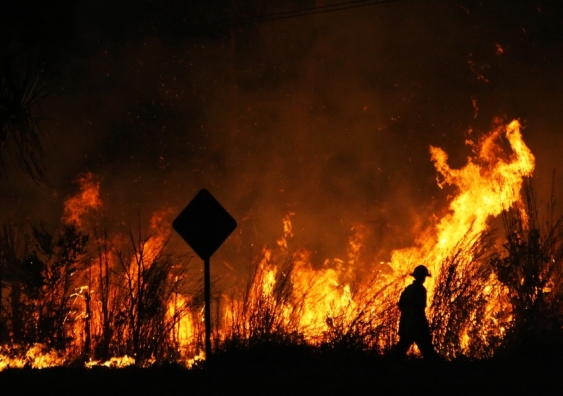Past Conformity: Enhancing Residential Property Safety with a Thorough BAL Report Analysis
Past Conformity: Enhancing Residential Property Safety with a Thorough BAL Report Analysis
Blog Article
How BAL Record Impacts Bush Fire Protection Actions
In the realm of bush fire protection, the Structure Assault Level (BAL) report stands as a vital tool that significantly affects the safety and security and durability of homes in fire-prone areas - BAL Report. The influence of a BAL assessment extends much beyond plain paperwork; it serves as the foundation for determining the ideal building standards and fire defense steps required to reduce the dangers posed by bushfires. As areas come to grips with significantly severe fire periods, recognizing just how the BAL record forms these protective measures comes to be paramount for builders, homeowners, and policymakers alike
Comprehending the Bushfire Attack Degree

Relevance of BAL Report Assessment

Moreover, the BAL report analysis functions as a foundational action in following lawful commitments and demands associated with bushfire security. Local councils and authorities commonly mandate the submission of a BAL report as part of the preparation and structure approval process to ensure that residential or commercial properties are sufficiently safeguarded against bushfire dangers. Stopping working to carry out a complete BAL report assessment can result in inadequate protection steps, leaving residential or commercial properties susceptible to ruining bushfire occurrences.
Construction Criteria Based on BAL
A comprehensive understanding of the Bushfire Strike Level (BAL) allows building proprietors to implement building and construction requirements tailored to their details danger profile. Building and construction criteria based on BAL are essential in minimizing the influence of bushfires on properties. The BAL ranking categorizes the potential threat a property faces throughout a bushfire on a range from BAL-Low to BAL-FZ (Fire Area)
Executing Fire Protection Actions
With the foundation of construction requirements based on Bushfire Attack Level (BAL) in area, the focus now moves in the direction of the functional application of fire defense actions to strengthen buildings against bushfire risks. Passive measures consist of utilizing fireproof building check here products, installing ember guards on vents, securing spaces in roofing systems and wall surfaces, and maintaining a clear space around the More hints building cost-free from flammable plants. By integrating both passive and active techniques, residential properties can considerably decrease their susceptability to bushfire incidents and increase the safety and security of occupants.
Safeguarding Houses Versus Bushfires
Effectively guarding homes against the devastating effects of bushfires needs a extensive and positive strategy to fire security measures. Home owners residing in bushfire-prone locations have to prioritize the execution of different strategies to improve their residential property's durability versus wildfires. One fundamental element is producing a defensible room around the home by keeping a clear area devoid of flammable products. This consists of consistently cutting plant life, removing dead plants, and guaranteeing a safe distance between structures and trees. Installing fireproof roof covering materials can also substantially lower the risk of ash assaults and straight flame contact. In addition, sealing spaces and vents to avoid cinder invasion, as well as including fire-resistant doors and home windows, can help fortify the home's defense versus bushfires. Buying a reliable water resource, such as a well-kept lawn sprinkler or a specialized water container, is critical for providing water during fire emergency situations - BAL Report. By welcoming a positive stance and integrating these safety actions, property owners can significantly enhance their opportunities of safeguarding their homes versus bushfires.
Verdict
To conclude, the Bushfire Strike Level (BAL) record plays an essential function in determining the essential security measures against bushfires. By examining the BAL, construction criteria can be tailored to mitigate the threats and make sure the safety and security of homes in you can look here fire-prone locations. Implementing fire protection measures based on the BAL report is necessary in guarding properties from possible bushfire dangers. It is crucial for house owners to prioritize BAL assessments and stick to suggested building and construction requirements to improve bushfire resilience.
In analyzing bushfire threat to homes, recognizing the Bushfire Attack Degree (BAL) is a vital element for carrying out efficient defense steps. Generally, a clear understanding of the Bushfire Attack Degree is vital for carrying out appropriate security procedures and mitigating the effect of bushfires on homes.
Report this page